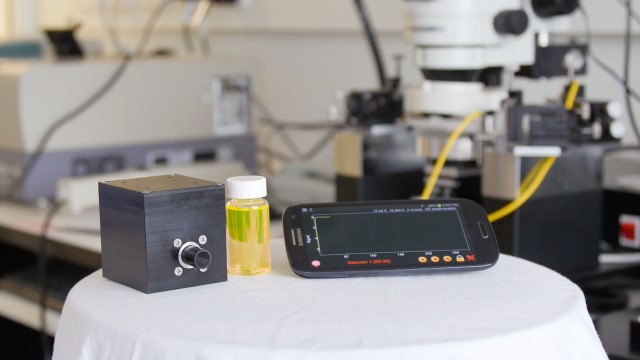

The growing incidence of improvised threats will be tackled by SCMB researchers and collaborators, who have been awarded funding to develop new, anti-threat technology.
The researchers, who will work on a miniaturised device to detect chemical threats, have attracted around $2 million in the Federal Government’s Counter Improvised Threats Grand Challenge.
Minister for Defence Industry, Christopher Pyne, recently announced the 'Next Gen Tech Funding' awarded to 13 projects out of 200 submitted proposals.
Dr Paul Shaw and Professor Paul Burn of UQ’s Centre for Organic Photonics & Electronics (COPE) are world-leaders in fluorescence-based detection of explosive vapours.
Professor Burn said the research, in collaboration with the Defence Science Technology Group, would be undertaken over the next three years.
“The program awarded to the COPE team builds on the intellectual property and know-how that has gone into the development of the Arbsense technology, which is currently being commercialised by Arborescent 2 Ltd,” Professor Burn said.
“It is fantastic how a serendipitous discovery has now led to the opportunity to work with Defence on a technology that could improve safety at home and abroad.”
He said COPE’s strength was its ability to engineer materials for specific applications and understand how and why they worked.
“We will work with the other Grand Challenge partners in developing a prototype threat detection and defeat system,” he said.
Media: Professor Paul Burn, p.burn@uq.edu.au, +61 7 334 67614.



